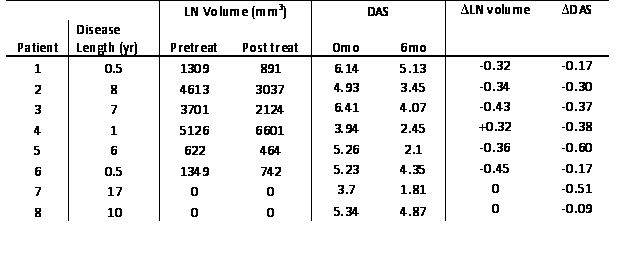Table 1
Disclosure:
H. Rahimi,
None;
V. Chengazi,
None;
G. Dieudonne,
None;
E. M. Schwarz,
None;
C. T. Ritchlin,
Amgen, Janssen, UCB, Abbott (AbbVie), Regeneron,
5,
Amgen, Janssen, UCB,
2.
« Back to 2013 ACR/ARHP Annual Meeting
ACR Meeting Abstracts - https://acrabstracts.org/abstract/the-effect-of-certolizumab-on-lymphatic-volume-and-flow-in-rheumatoid-arthritis-patients-with-acute-flare/

